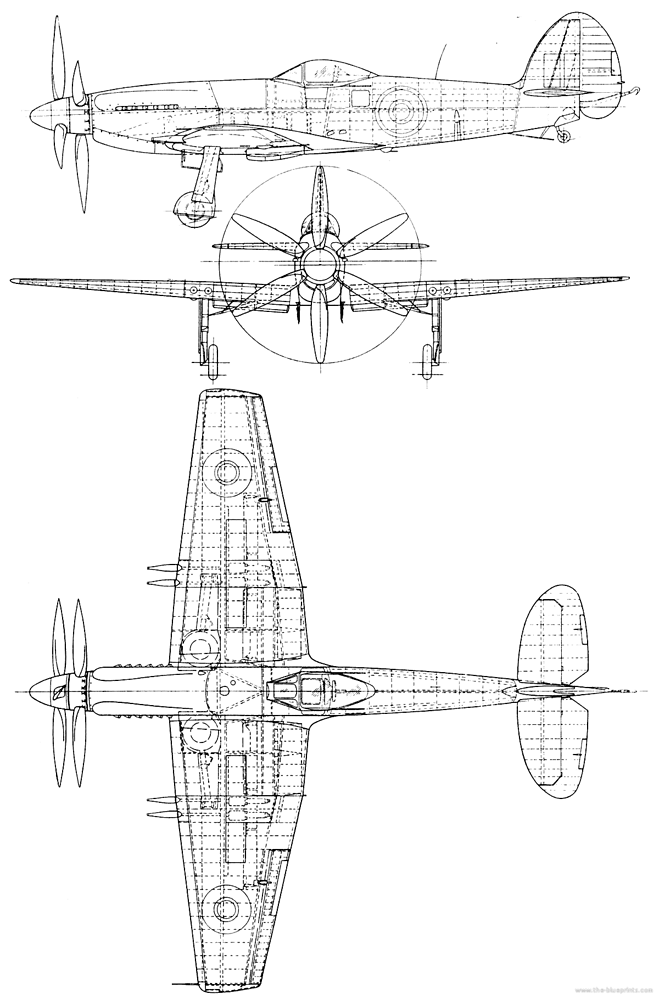- Yes
- No
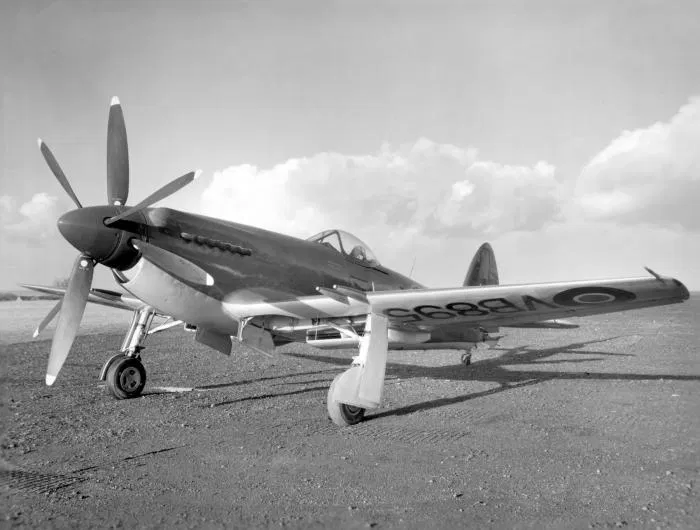
Introduction
The Supermarine Seafang was a British naval fighter aircraft developed as a carrier-based variant of the Spiteful, itself an evolution of the iconic Spitfire. The Seafang was designed to meet Air Ministry specification N.5/45, with the specific intention of adapting the high-performance Spiteful for Royal Navy use. Key modifications included the addition of an arrestor hook for carrier landings, a contra-rotating propeller to counteract engine torque, and power-folding outer wing panels for easier storage on aircraft carriers. The Seafang’s design represented the culmination of Supermarine’s efforts to create a high-performance piston-engine fighter for naval operations.
The Seafang was a single-seat, all-metal, low-wing fighter powered by a Rolls-Royce Griffon delivering 2,350 - 2,375hp. It featured a newly designed, non-elliptical laminar-flow two-spar wing. Its fuselage, although similar to the older Spitfires, offered improved forward visibility and a larger “Spiteful-type” tail and rudder. The aircraft carried four 20 mm cannon with 624 total rounds and could mount bombs, rockets, and torpedoes. Top speeds in excess of 475mph/764kph were achieved during testing.
The Seafang F.32 was developed as the definitive naval variant of the Spiteful. It featured folding outer wing panels for better carrier storage, an arrestor hook for deck landings, and a powerful Griffon 89 engine producing 2,350 hp, driving two three-bladed contra-rotating propellers to eliminate engine torque effects. The development began with the first prototype, VB895, which flew in June 1946 and quickly began assessments for its suitability as a naval fighter, such as deck landing trials on HMS Illustrious.
Despite its capabilities and lineage, the Seafang’s performance was not deemed sufficiently superior to existing aircraft in the Royal Navy’s inventory, particularly the Seafire F.47. Moreover, the advent of jet-powered fighters such as the Meteor and Vampire further reduced the need for new piston-engine designs. The Seafang’s low-speed handling characteristics, critical for carrier operations, were also found to be less-than-favourable during testing.
By 1947, the Seafang was essentially obsolete as the Royal Navy shifted its focus towards jet-powered aircraft. The development of the Seafang, particularly the F.31, marked the end of an era for piston-engine fighters, as newer technologies rapidly took over. Although the Seafang did not see widespread production or service, its development contributed to the evolution of naval aviation, influencing future designs such as the Supermarine Attacker, a jet-powered aircraft that carried forward some design elements from the Spiteful and Seafang lineage. Ultimately, the Hawker Sea Fury, which was further along in development and a more known constant, was chosen as the Royal Navy’s primary fleet fighter.
In-game, the Supermarine Seafang would be the perfect way to cap-off the propeller-era of the Royal Naval fighter line, representing the peak of British (and arguably global) piston naval fighters.
Specifications
Spoiler
Crew: 1
Length: 34 ft 1 in (10.39 m)
Wingspan: 35 ft 0 in (10.67 m)
Width: 27 ft (8.2 m) wings folded
Height: 12 ft 6.5 in (3.823 m)
Empty weight: 8,000 lb (3,629 kg)
Gross weight: 10,450 lb (4,740 kg)
Powerplant: 1 × Rolls-Royce Griffon 89 V-12 liquid-cooled piston engine, 2,350 hp (1,750 kW)
Propellers: 6-bladed contra-rotating constant-speed propeller
Maximum speed: 475 mph (764 km/h, 413 kn) at 21,000 ft (6,400 m)
Cruise speed: 220 mph (350 km/h, 190 kn) to 240 mph (390 km/h)
Range: 393 mi (632 km, 342 nmi) at cruise speed
Service ceiling: 41,000 ft (12,000 m)
Rate of climb: 4,630 ft/min (23.5 m/s) at 2,000 ft (610 m)
Guns: 4 × 20 mm (0.787 in) Hispano Mk V cannon
Rockets: 4 × RP-3 rockets
Bombs: 2 × 1,000 lb (454 kg) bombs
Torpedoes: Facilities for 1x Torpedo
Images
Spoiler
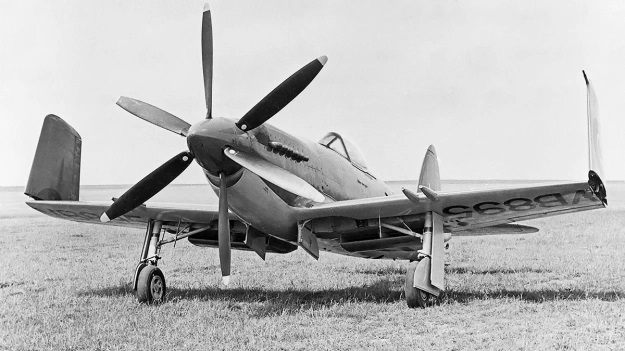
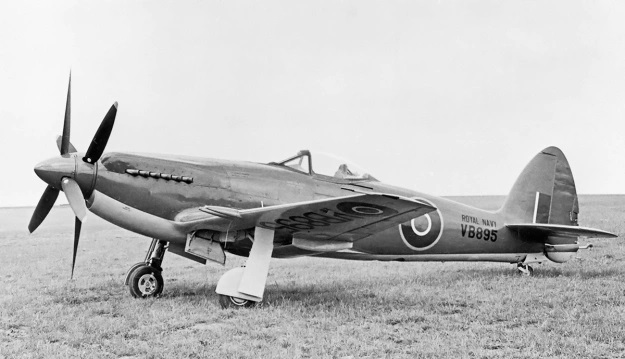
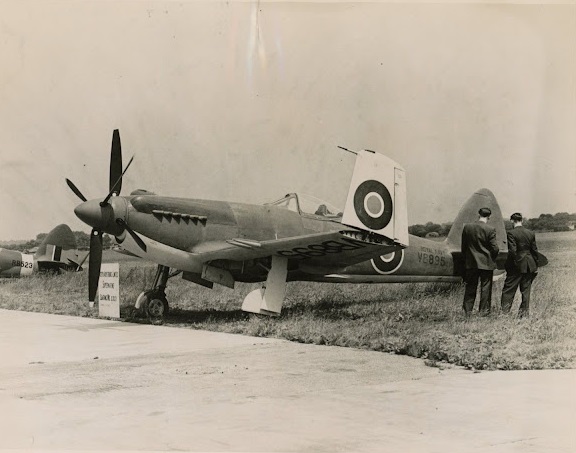

Sources
